Umbria is one of the smallest regions in Italy but at the same time one of the greenest. It sprinkles with a large number of small villages with characteristic charm.
You have probably already heard of villages such as Assisi, Gubbio, Spello, Spoleto...places that are definitely not to be missed during a visit to Umbria, but now widely known. Assisi alone attracts thousands of tourists and religious pilgrims every year, curious to follow in the footsteps of Italy's most famous saints: San Francesco and Santa Chiara.
However, today we at Visit Italy want to help you discover some of the most hidden little gems, unusual villages that are absolutely worth visiting and that will make your stay in Umbria much more than authentic! If however Umbria is a region that you don't know, start discovering it from its most popular destinations Assisi and Orvieto.

15. Monte Castello di Vibio
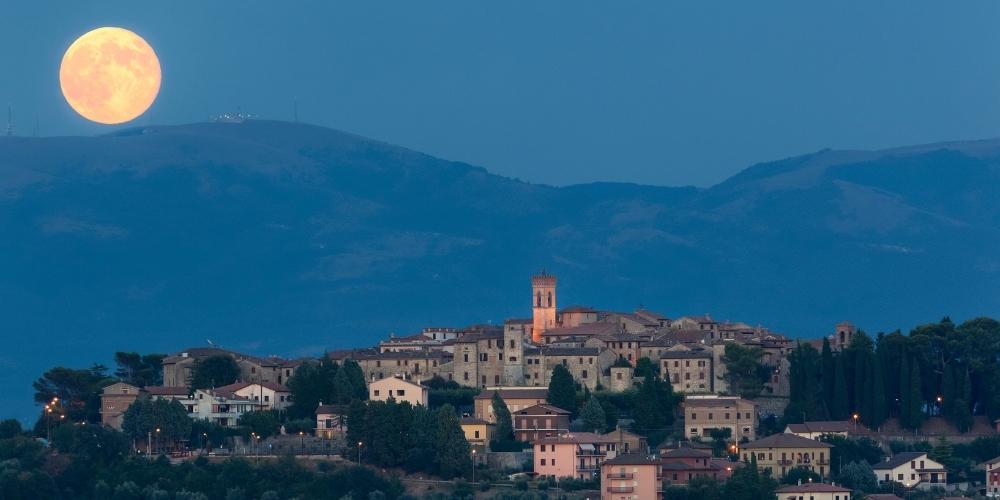
Monte Castello Vibio is in the territory of the Parco Fluviale del Tevere (Tiber River Park), which includes, in addition to the course of the river: Lake Corbara, the Forello gorges and the naturalistic oasis of Alviano. In the Park, in addition to exciting flora and fauna, there are notable cultural, archaeological and monumental remains. Along the Tiber's banks, the Umbrian and Etruscan civilisations flourished in the past: the river was decisive in the Romanisation of the territory.
As for the village, its tiny houses are now almost entirely uninhabited. The Teatro della Concordia, the most miniature theatre in Italy, is worth a visit: a structure with just 99 seats between boxes and stalls, designed in 1789, in the middle of the French post-revolutionary period. In 2002, the Italian Post Office also celebrated the theatre with the issue of a postage stamp in its honour in the "Italian artistic and cultural heritage" section.
Listent to " Most beautiful Umbria villages2 with the voice of Monna Lisa & Leonardo
14. Arrone

The Arrone's village owes its name to the Arroni nobles, most likely founders of the place at the end of the 9th century. It is on a rocky hill along the left bank of the Nera river, a short distance from the Marmore waterfalls.
Arrone was a so-called 'hillock castle' from which they used to observe and defend the area. Roman mills, medieval hermitages and monasteries, and industrial archaeological buildings. Such as the lignite mine in the hamlet of Buonacquisto.
Still visible is the original medieval castle built by the Arroni family, which houses the Gothic church of San Giovanni Battista with its admirable 15th-century frescoes. The Porta di San Giovanni (St John's Gate) is near the church, characterised by a pointed Gothic arch and connecting the medieval village with the original settlement area. Other ecclesiastical buildings include the 16th-century Church of Santa Maria Assunta with a 15th-century portal, frescoes and terracotta statues.
It is the proper village for lovers of outdoor activities. In the Parco Fluviale del Nera (Nera River Park), there are many sporting activities to do and a vast network of trekking trails from where you can also reach the famous waterfall.
13. Massa Martana

Massa Martana is a village in an area of extraordinary natural interest. It is at the foot of the Martani Mountains, and on their slopes, there is one of the most extensive holm oak forests in Europe. Several paths for walking, trekking, mountain biking, horse riding, and picnic areas are among the mountains.
Also, don't forget the Sanfaustino mineral water and the Sanfaustino spa where you can relax. Cultural highlights include the Abbey of San Terenzio and Fidenzio and the Church of Santa Illuminata.
Here you must try the Nociata, a kind of nougat made with walnuts, honey, egg whites, orange peel and then wrapped in laurel leaves. It was made in Caffè Ranucci by a waiter who returned from Copenhagen.
12. Paciano
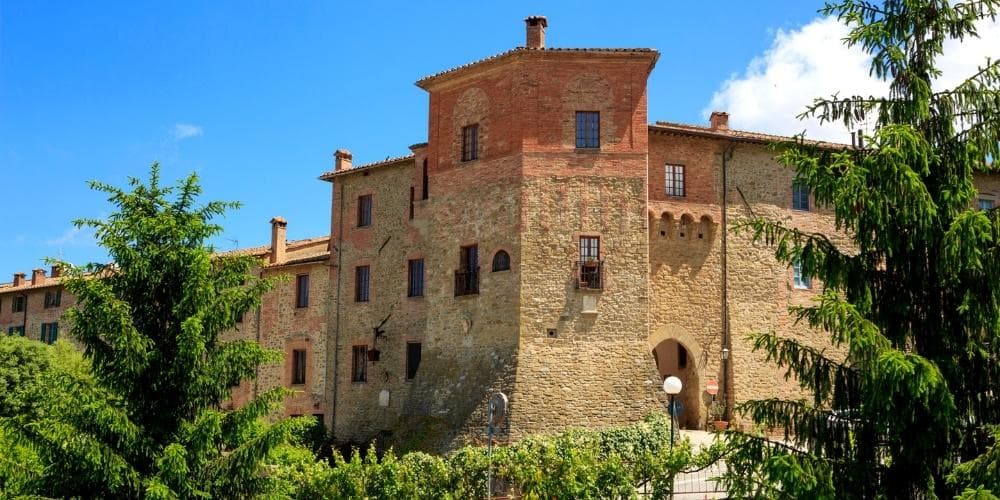
Paciano is a delightful town protected by a 14th-century wall about 600 metres long that includes eight towers and three gates: the Fiorentina, the Perugina and the Rastrella.
Among the things to visit is the TrasiMemo - Banca della Memoria del Trasimeno, a unique bank that preserves the products of local craftsmanship: museum rooms, exhibitions, guided tours and workshops. The "Don Aldo Rossi" Parish Museum is not far away, where you can see ancient municipal, civilisation and religious artefacts: the various 15th-century paintings and frescoes are well worth a visit.
Don't miss the Torciglione, so-called because of its shape and which is the typical Christmas cake. Also not to be missed is its magnificent extra-virgin olive oil, made from the olive trees on its hills, appreciated worldwide and recognised by the "DOP" mark.
11. Bettona
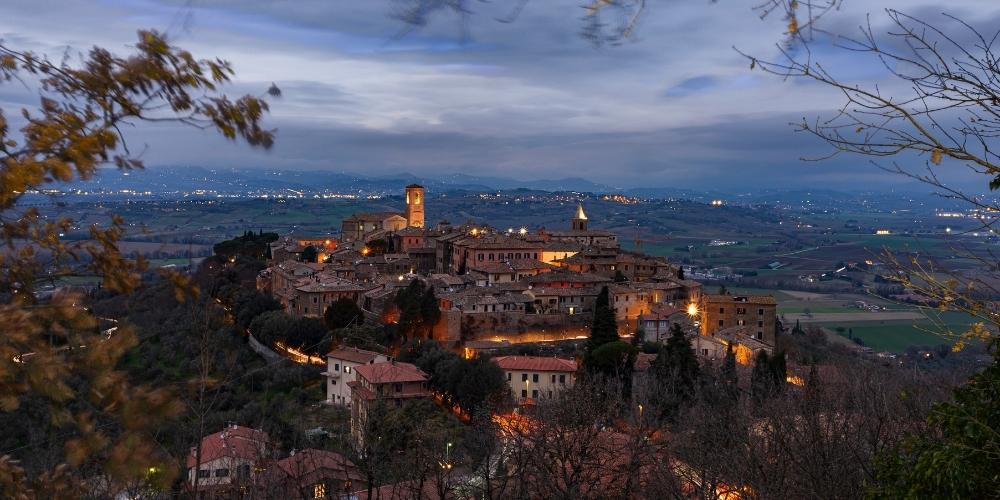
Bettona is a village of Etruscan origin with just over 4,000 inhabitants, part of the Most Beautiful Villages in Italy association. Here you can enjoy a fantastic panoramic view from Assisi to Spello.
You will lead to the village through an ancient wooden gateway of medieval origin. Amidst narrow streets and small squares, you should see the medieval walls, which also incorporate sections of Etruscan walls; the Municipal Picture Gallery in the Palazzo del Podestà; the historic centre of medieval origin; the Collegiate Church of Santa Maria Maggiore; the Oratory of Sant'Andrea; and finally, the Church of San Crispolto.
10. Rasiglia
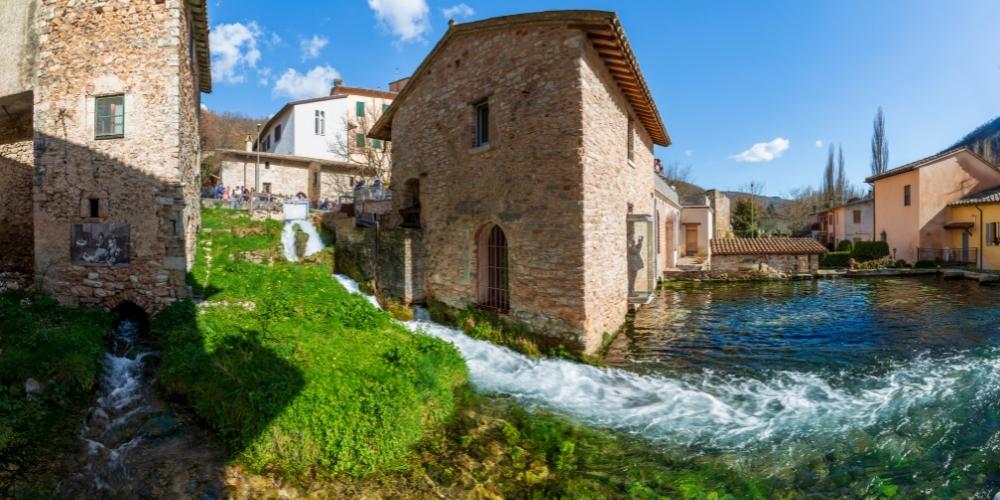
Between Foligno and Colfiorito is Rasiglia, a village frozen in time. One of the most beautiful places in Umbria, it is also known as Umbria's little Venice, and when you visit it, you will immediately understand why. A spider's web of small watercourses outlines the profiles of stone houses before plunging into emerald-hued pools.
The churning of water in streams and waterfalls broke the silence. A place with an ancient, almost fairytale atmosphere!
Unfortunately, we are losing these magical atmospheres due to the many tourists Rasiglia attracts. If you are lucky enough to visit in less touristic periods, you will surely be able to appreciate its beauty and capture its true essence.
9. Montefalco
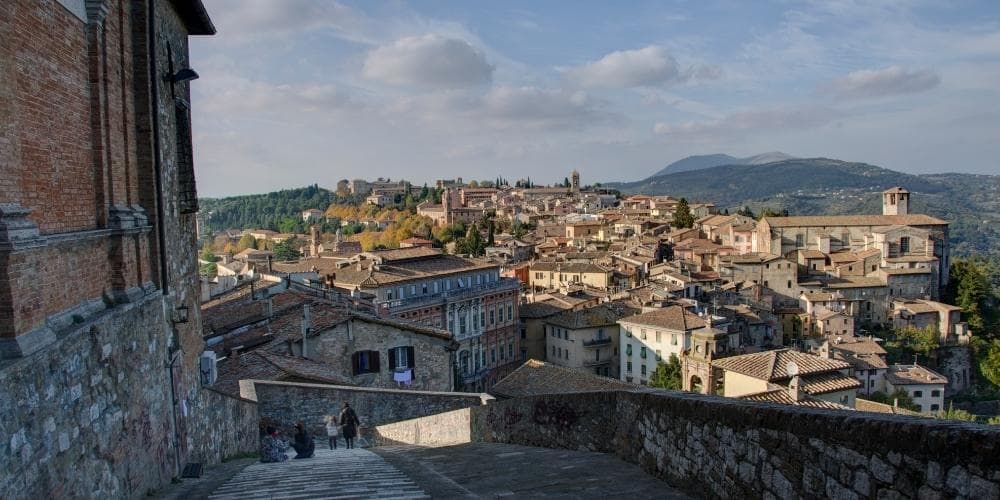
Travelling along the Strada del Sagrantino, one stops in Montefalco, a picturesque village surrounded by olive trees and, above all, vineyards. The town is a reference point of excellence in the wine-growing area: the Sagrantino di Montefalco and Montefalco Rosso are wines produced here.
Montefalco is a village on top of a hill where, on sunny days, it is possible to admire a 360° panorama that sweeps across the entire valley between Perugia and Spoleto. The well-preserved walls and ancient towers have allowed the historical centre to maintain its antique medieval appearance.
Not to be missed is the almost circular Piazza del Comune, where the most important buildings stand: Palazzo Comunale, Teatro Comunale and Oratorio di Santa Maria di Platea. Within the walls of Montefalco is the Church-Museum of San Francesco, where the walls of the apse contain one of the most important fresco cycles in Italy, signed by Benozzo Gozzoli in 1452; also here is a nativity scene painted by "Il Perugino".
Also worth seeing: are the medieval walls with the crenellated gate of Sant'Agostino, the church of Sant'Agostino, the church of Santa Lucia, the parish church of San Fortunato, the castle of Fabbri. There is also a crypt that contains numerous archaeological finds.
Explore an authentic Montefalco winery with private tasting8. Bevagna
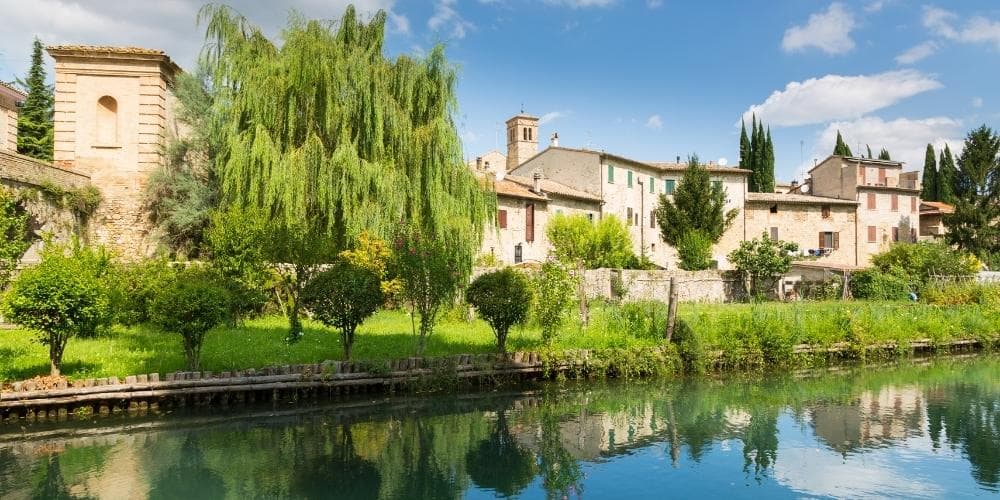
If you are looking for one of the most beautiful medieval villages in Umbria, you will not be disappointed in Bevagna! Embraced by an imposing city wall that encircles its perimeter, Bevagna tells its own story from its Roman, Lombard and medieval past. It was a real leap back in its delightful, perfectly preserved historical centre.
An intricate succession of alleyways behind which suddenly appear suggestive views. Over the years, Bevagna's charm has attracted travellers on the Grand Tour and the poet Carducci, but even today, thousands of tourists invade the village peacefully.
Sights: the former church of the Madonna delle Neve with the remains of a Roman temple, the thermal baths dating back to the 2nd century AD, Piazza Silvestri, Palazzo dei Consoli with its 19th-century theatre, the churches of San Silvestro and San Michele Arcangelo, the civic museum.
Bevagna is known for one of the most beautiful historical commemorations, the Mercato delle Gaite. It takes place in the second half of June and reconstructs with incredible accuracy the life of the village in the medieval period.
7. Corciano
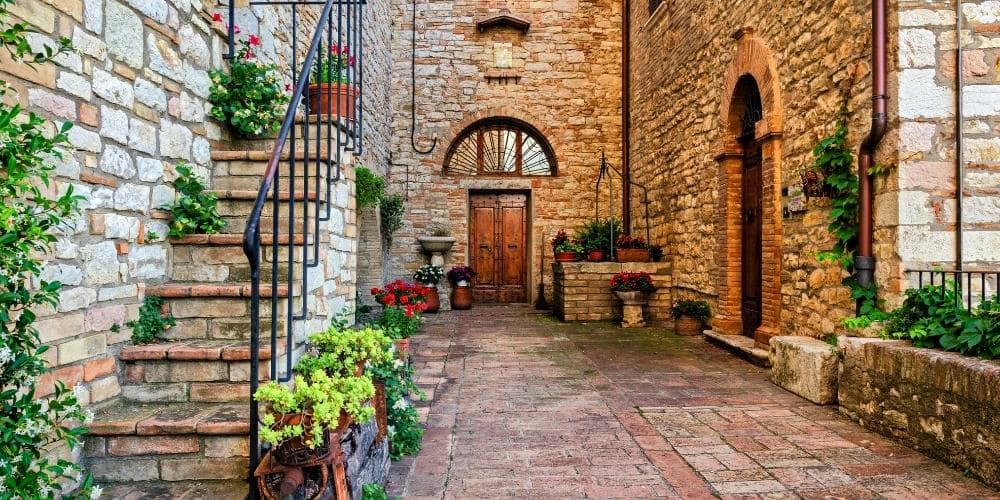
Halfway between Lake Trasimeno and Perugia, above the hills, rises Corciano, a village included in the association of the most beautiful villages in Italy. According to popular tradition, its name means Cuore di Giano (Heart of Janus) or Colle di Giano (Hill of Janus). At the same time, according to mythology, Coragino founded the town, one of the survivors of the Trojan War and a friend of the hero Ulysses.
The village's origins seem to date back to Roman times, if not also Etruscan. The medieval settlement developed later around the castle.
Corciano is by an imposing wall with two entrances: Porta Santa Maria and Porta San Francesco. Going towards the main square, you can visit the Church of Santa Maria Assunta and the bell tower, which houses two masterpieces of Italian art: the "'Gonfalone" by Benedetto Bonfigli and Perugino's "Assunta".
Don't miss the Church of San Cristoforo and the towers, the emblem of Corciano. Also, its palaces include the Palazzo del Capitano del Popolo, the ancient residence of the representative of the dominant Perugia, the Palazzo della Mercanzia and the Palazzo dei Priori.
As for museums, the following are very interesting: the Museo della Casa Contadina (Museum of the Peasant House), where there is a reconstruction of a typical Corciano house from the 19th century; the Museo Paleontologico (Paleontological Museum), inside the 16th century Palazzo Municipale (Town Hall), which houses exciting finds from the Etruscan and Roman periods. Finally, treat yourself to a relaxing break by admiring the fantastic panorama from the Sentiero dei Mandorli (Almond Tree Path). This walk winds around the ancient walls and from where you can admire scenery ranging from Lake Trasimeno to Monte Amiata and Monti Martiani.
Discover the lands of Perugino from Val di Chiana to Lake Trasimeno6. Nocera Umbra
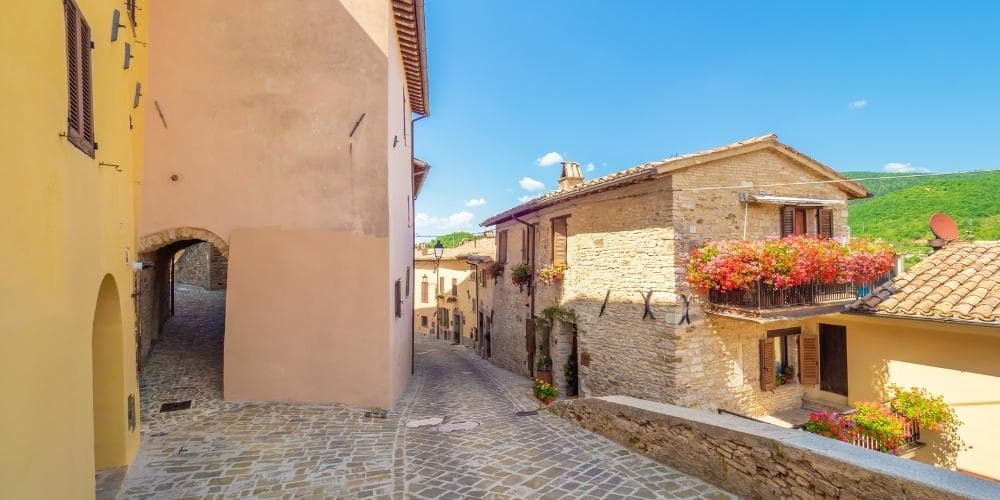
Nocera Umbra is a village of medieval origin that owes its name to Nuceria, a Tuscan-Umbrian toponym meaning 'New Creation', dating back to the 8th century BC.
The 14th-century Church of San Francesco is worth seeing, home to the Pinacoteca and Museo Civico. The most critical Umbrian school paintings in the town have found a worthy home, such as the frescoes by Matteo da Gualdo and the Alunno Polyptych.
The village's main attraction is the Assumption Cathedral, which has undergone several renovations. At first, an ancient Romanesque building from the 12th century, then completely rebuilt in 1448. It contains a beautiful majolica floor and 17th-century paintings by the artist Giulio Cesare Angeli. Next to it is the Campanaccio (Civic Tower), an imposing 11th-century tower, the only remnant of the ancient fortress.
Among the other churches in the historical centre, the neo-Gothic San Filippo Church and Santa Chiara Church, completely renovated in the 19th century, are worth visiting. Other historic buildings include the Art Nouveau-style Municipal Theatre and the Piervissani Library (containing around 50,000 texts). The Bishop's Palace also houses the Archaeological Museum, where you can admire artefacts dating back to the Stone Age, the Middle Bronze Age and the Late Middle Ages.
Nocera Umbra has an ancient tradition as a spa resort: the Bagni di Nocera, known since the 16th century for the curative properties of its waters (those of the Angelica spring). Many important historical figures have come here to enjoy the therapeutic qualities of these waters, including Francesco Redi, Vincenzo Monti and Luigi Pirandello.
If you come to visit Nocera Umbra in August, don't miss the Palio dei Quartieri: an event that takes place near the village and is a competition with parades and theatrical performances on a specific theme. Otherwise, in September, you must attend the Cavalcata di Satriano: in which knights in period costume retrace the last journey of St Francis in 1226 from Nocera Umbra to Assisi.
Nocera Umbra's village hides another town. We are talking about the medieval city of Panicaglia, where there is an original castle of 1266, located at an altitude of 800 metres and overlooking the Umbrian mountains. For centuries, the Mancini family owned the village: there was a bakery and a small church (still in use today).
From 2019 Borgo Castello Panicaglia is the ideal location for a stay for couples or families and an osteria open to all and offering local and 0 km products. The perfect place in which to discover the most authentic Umbria!
Then, the Umbrian god had a marvellous blue for the sky and an even more beautiful colour with which he painted the distances and the mountains. Umbria is so miraculously blue; it is the bluest of all lands.
5. Deruta
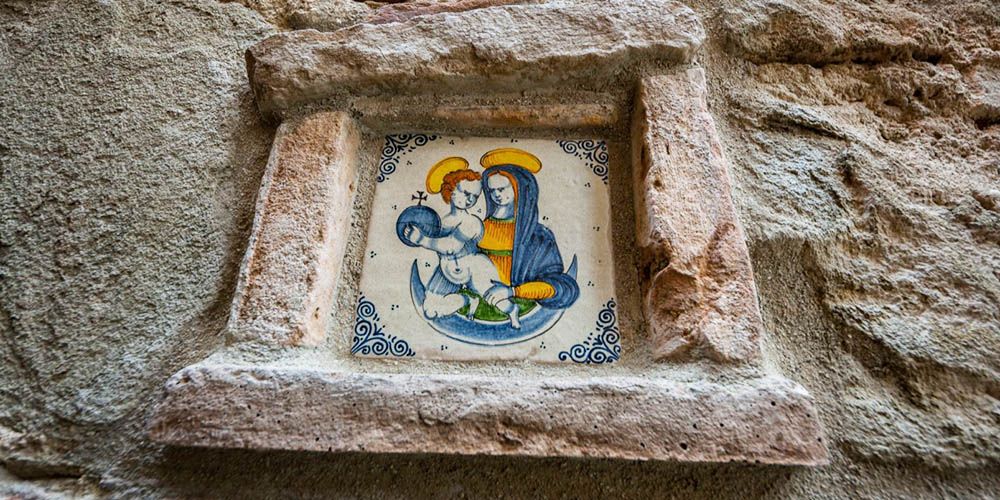
Famous throughout the world for its production of artistic ceramics, Deruta is located 15 km south of Perugia, easily reachable with the SS3bis. Included in the list of the most beautiful villages in Italy, Deruta is a small and delightful village, where every detail recalls the art of ceramics, a tradition handed down from the Middle Ages to today.
The tour of Deruta must start from the beautiful and scenic access staircase, each step is decorated with colored majolica that recall geographical and natural elements that blend with folklore and religion. The staircase will take you up to the city walls, beyond which the historic center of the town opens, characterized by artisan workshops and ancient ovens, look out and let yourself be conquered by one of the imaginative pieces.
4. Lugnano in Teverina
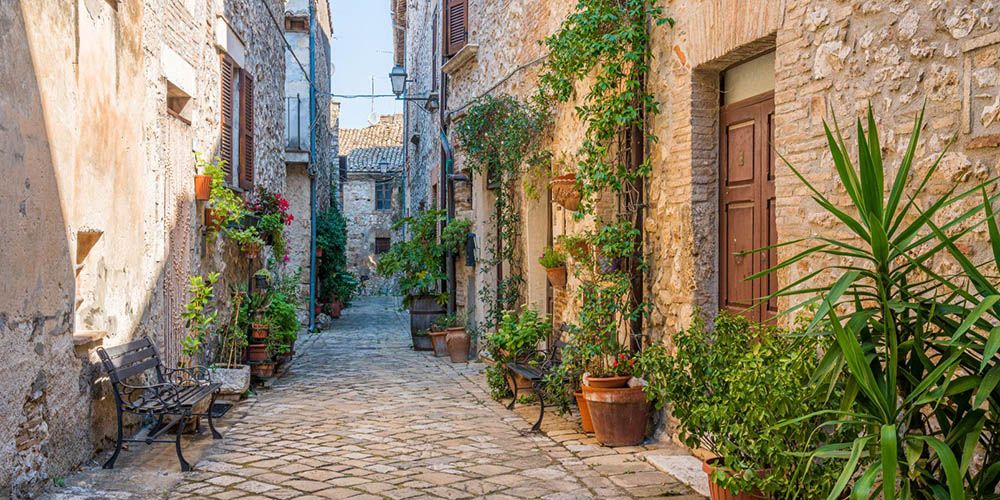
Located in the municipality of Terni and precisely in the Tiber Valley, Lugnano in Teverina, is like many of the Umbrian villages of medieval imprint, thanks to its position you can enjoy romantic panoramic views and get lost in the narrow and fresh alleys. Lugnano in Teverina is on the list of the most beautiful villages in Italy.
The pride of Lugnano is the splendid church of Santa Maria Assunta or Colleggiata from the 13th century, the church has a Romanesque style. Also worth visiting is the sixteenth-century Palazzo Farnese-Ridolfi and the surrounding convent of San Francesco, built in 1229 in memory of a miracle performed by San Francesco to free a boy attacked by a wolf.
3. Castiglione del Lago
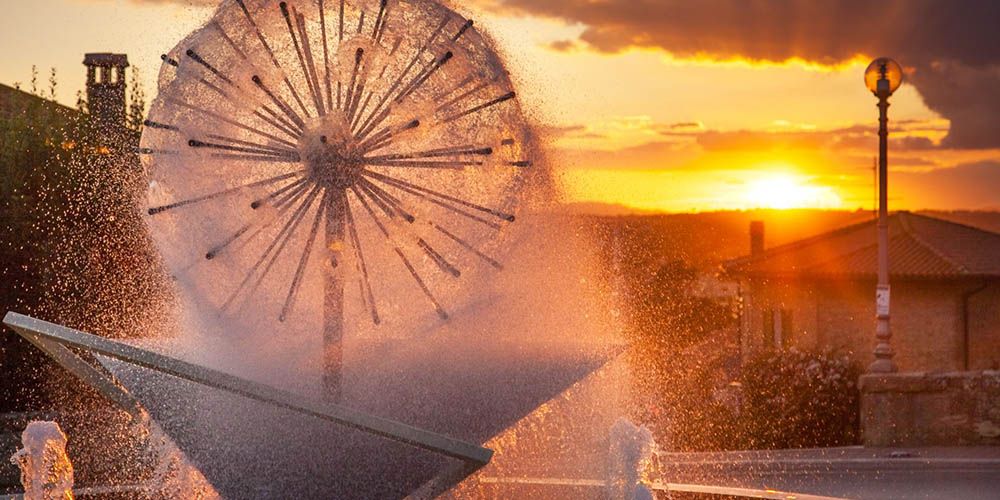
Located in the northern part of Umbria, Castiglione del Lago is located on a hilly promontory on the western shore of Lake Trasimeno, in the province of Perugia. Castiglione del Lago is a splendid village that attracts many tourists every year thanks to its rich cultural, environmental and artistic heritage.
For the visit we suggest you start from the historic center, surrounded by the classic medieval walls, continue your visit with the castle, the Rocca del Leone, a magnificent example of Umbrian architecture of the Middle Ages, from the patrol path you can enjoy an enchanting view of the lake. Of great value, the Palazzo Ducale or Palazzo della Corgna, built in 1560, beautiful, frescoed rooms.
2. Montecchio
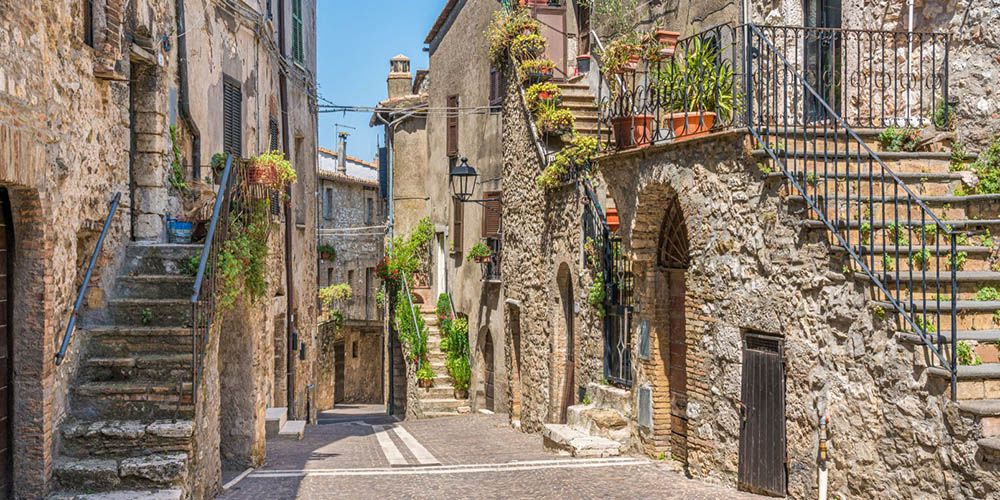
Located in the Tiber Valley on the slopes of Monte Croce di Serra, Montecchio is in the province of Terni, just 15 km from Orvieto. Montecchio is a small and characteristic medieval village immersed in the thick green of the Umbrian woods, the so-called uncontaminated scrub, where nature still reigns supreme.
To see and discover the castle, the remains of the double circle of walls, the ancient Gate that was once the only access to the town formed by a round arch and surmounted by a crenellated tower and the Church of Santa Maria delle Grazie from the 15th century. Montecchio is a member of the Città dell'Olio Association and the Strada dei Vini Etrusco Romani.
1. Passignano sul Trasimeno
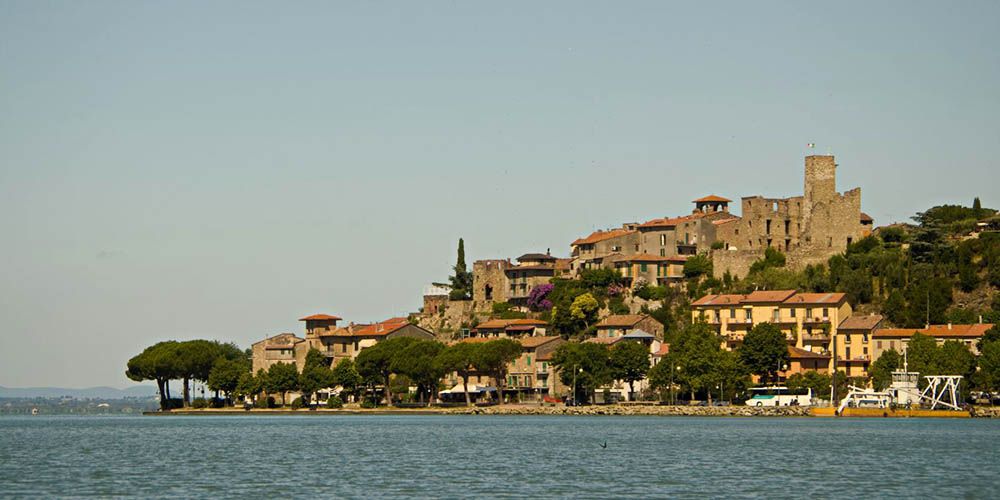
We close our roundup of the 15 most beautiful villages in Umbria, with Passignano sul Trasimeno, a village that stands on a small promontory located in the northern part of Lake Trasimeno, from which it takes its name, we are in the province of Perugia. Passignano sul Trasimeno is an ancient fishing village, near the Rocca there is also the Boat Museum.
The calm waters of the lake allow you to practice numerous water sports, such as sup, canoeing, sailing; there are many possibilities for trekking in the surrounding area and if you want to explore the surroundings, the ferry that takes you to the islands of Trasimeno (Maggiore and Polvese islands) leaves from here.
Discover Passignano sul Trasimeno and the beautiful Umbrian villages with a tour departing from FlorAbout the author
Written on 08/08/2024

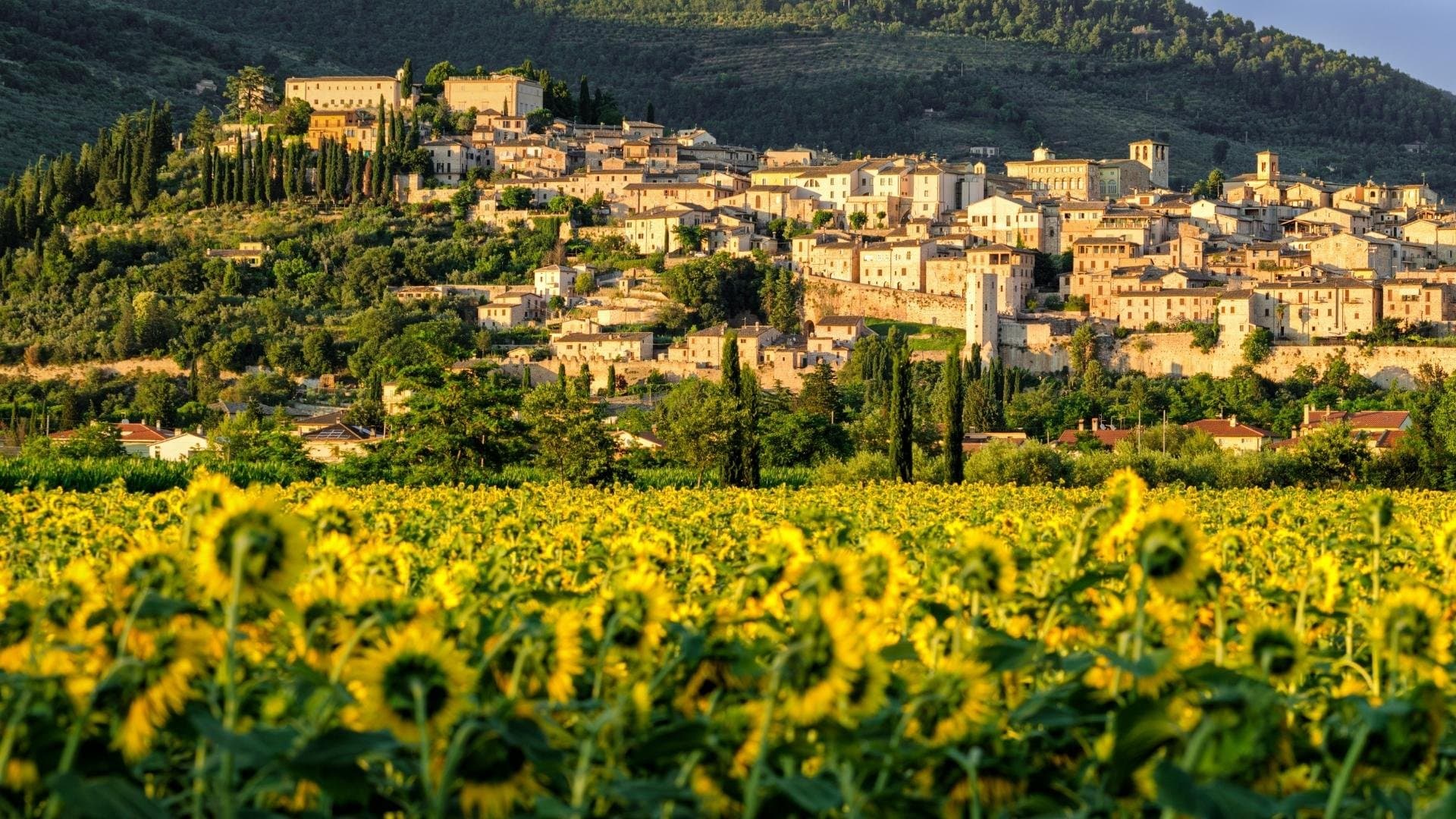

Ludovica Poliero
Come with us on a journey to discover the most beautiful villages in Umbria and less known to most visitors...